Taraka
Taraka offers its members fast, accurate, and complete Human Design charts. Unlike other Human Design chart providers that offer only a Natal Chart with major planet information to their members, Taraka offers several other types of charts — Interactive, Transit, Progressed, Composite, Spiritual & Dream, and Spiritual Progression — along with both major and minor planet information.
Date, Time, and Time Zones
The basic Human Design chart is a Natal chart, which is a chart representing fundamental aspects of Human Design based on the birth date and time of an individual.
There are several data points that are necessary to generate this chart accurately: the Date and Time of the individual’s birth, and their Place of birth. While the Date, Time, and Place of birth are generally provided via the individual’s birth certificate, determining the time zone of that place requires additional calculations.
For example, you may wish to generate charts for a person born in Phoenix, Arizona at 12:32 am on March 12, 1912.
What time zone was that, on March 12, 1912? You’d assume Pacific. Or were they using Mountain Time in 1912? Did they use daylight savings time in 1912, unlike now? If so, generally daylight savings time changes the second weekend of March. Was March 12 before or after the second weekend in March that year?
Providing historically accurate time zone data is not straightforward. In order to ensure that chart times are accurate, Taraka integrated with Astrolabe’s ACS Atlas, the industry-standard database for time calculation. We take the Date, Time, and Place of birth and check it against this Atlas to standardize our times and time zones.
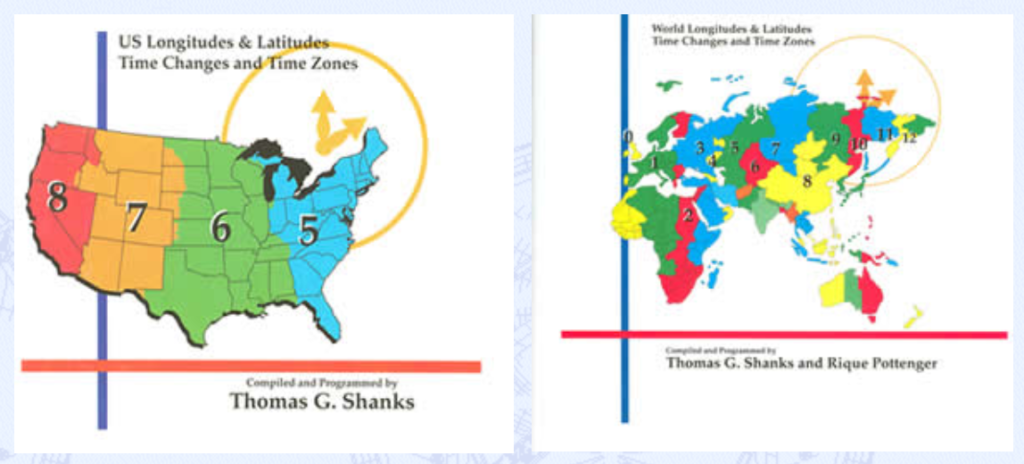
Additional Chart Times
A basic Natal Chart contains two date/times: a Personality date/time and a Design date/time. The Personality date/time, in black, represents the time of the individual’s birth. The Design date/time, in red, is calculated as the moment in time 88 solar degrees before the individual’s birth time.

Calculating the time on earth against solar degrees requires astronomical math, as the earth’s orbit around the sun is not a perfect circle. These calculations are performed with a combination of Taraka’s custom perl library and Swiss Ephemeris by Astrodienst. Swiss Ephemeris is based upon the planetary and lunar ephemeris DE431 developed by NASA’s Jet Propulsion Laboratory and covers the time range 13201 BC to AD 17191.
Taraka uses Swiss Ephemeris extensively, licensing its data and delivery system which includes a C library and many gigabytes of compressed ephemeral data.

Ephemeris Data
Once the Personality and Design dates are calculated, the basic Natal chart then uses these date/times to provide Gate and Line information for the following celestial objects: Sun, Earth, Moon, major planets including Pluto, and the North and South Nodes.
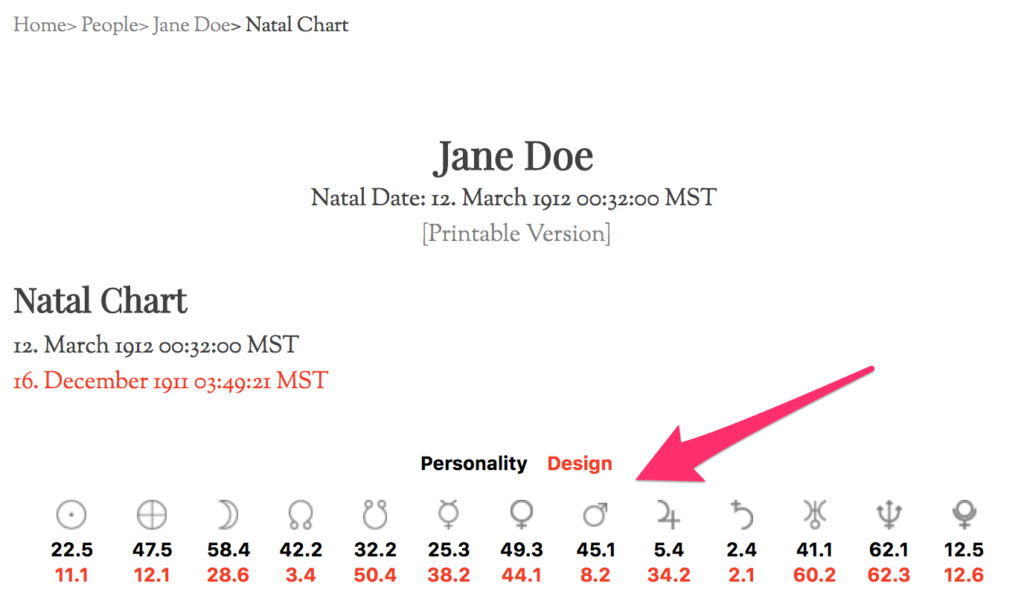
A gate can be a number from 1 to 64. The line of a gate can be a number from 1 to 6. Each Gate and Line represents a Hexagram of the I Ching, the ancient Chinese Book of Changes.
Human Design equations are very summarily diagrammed here:

For a specific example, let’s take the planet Mercury.
At two moments of time (the Personality and Design activations), we want to know Mercury’s position in space. We query Swiss Ephemeris to give us these positions at these points in time, and are given astronomical positions, in decimal longitude. We translate longitude to the zodiac.

We then apply Human Design equations to this position to identify the Gate and Line location for that planet, returning 25.3 for a Personality Gate/Line, and 38.2 for Design Gate/Line.

Major and Minor Planets
Taraka delivers minor planet as well as major planet data for each chart, including dwarf planets, asteroids, hypotheticals, fixed stars, Uranian points, TNO’s, Centaurs, and Damacloids. As long as the celestial object is itemized and given a minor planet number by the International Astronomical Union (IAU’s) Minor Center (https://www.minorplanetcenter.net/), and the Swiss Ephemeris has provided ephemeral data for the object, Taraka is able to quickly deliver Gate and Line information.
By default, charts return data for a select list of minor planets and other objects. This select list is curated by Kim Gould of Love Your Design. If the user wishes to research additional objects, they simply have to add those object numbers to the list.
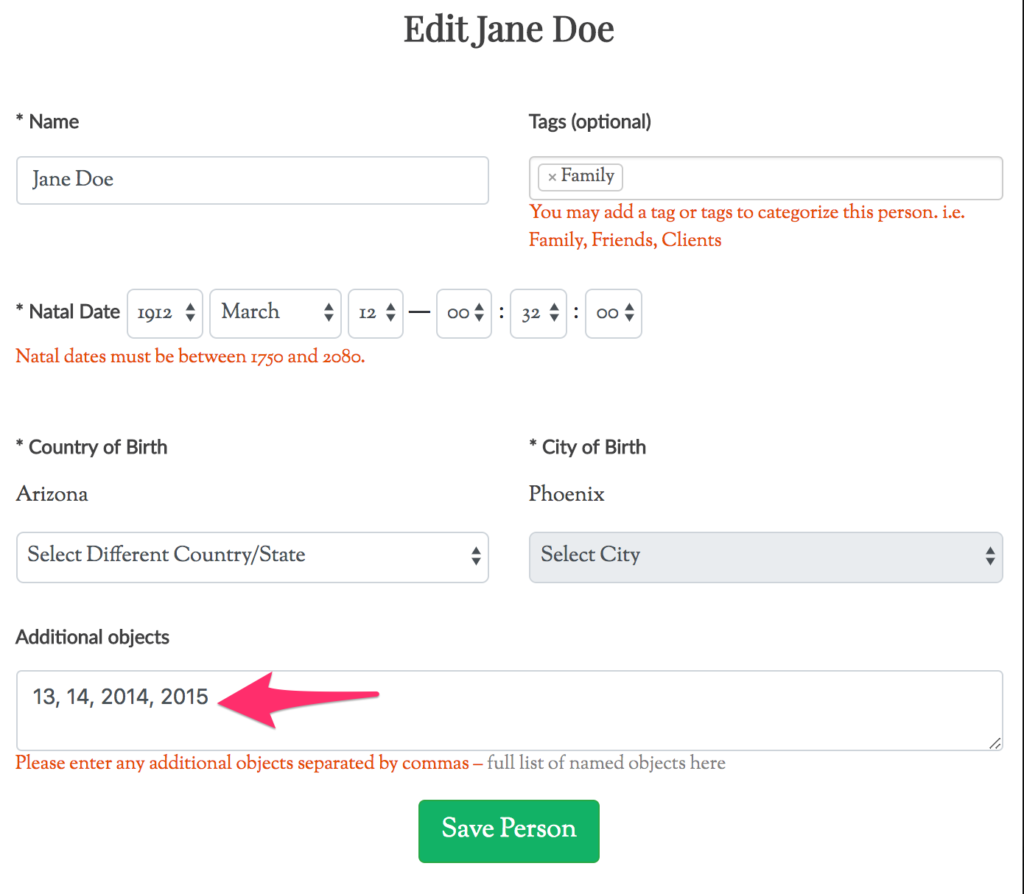
Additional Charts
While the majority of Human Design chart software out there delivers only a person’s Natal Chart, Taraka delivers many more charts than this.
Individual Charts
For an individual, Interactive, Spiritual & Dream, and Spiritual Express charts are also provided. For one example, this Spiritual & Dream chart’s Personality date is in the past, 88 lunar degrees before the natal date. The Design date is the same as the individual’s Natal Date. Taraka’s custom Perl library calculates the longitude location on earth (and thereby the date/time) within 0.0005 of a lunar degree.
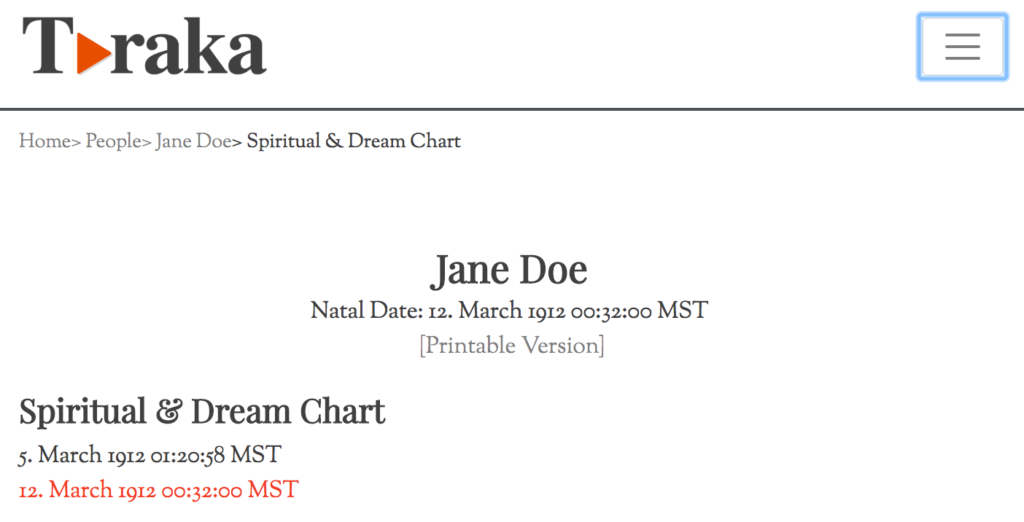
Progressed Charts
Taraka delivers progressed charts. Before, anyone looking for Human Design chart data for progressed charts had to spend an inordinate amount of time identifying and calculating the exact time of the progressed chart and the positions of each object of interest. Now, this date/time information is automatically generated and displayed for the user.
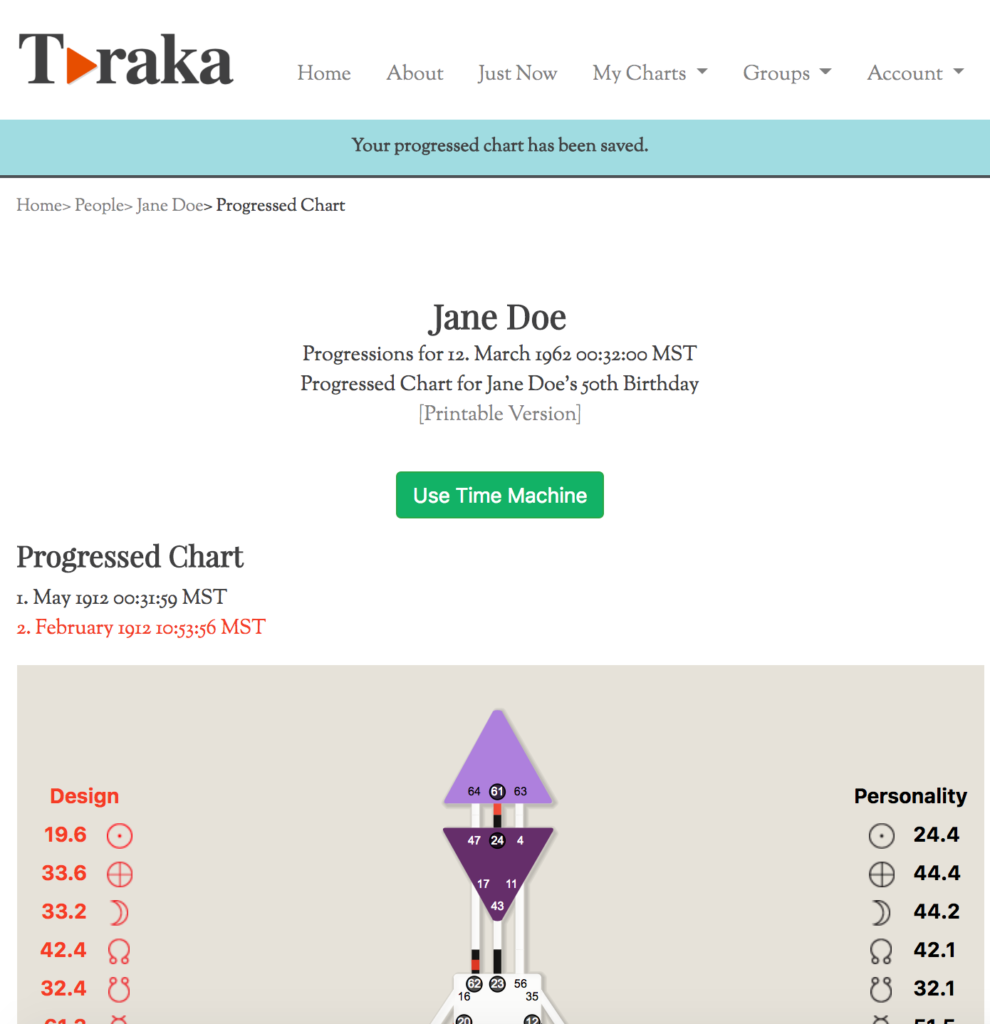
Composite Charts
Taraka delivers Composite charts, allowing users to be able to compare one chart to another in an overlay manner with the Composite Chart feature.
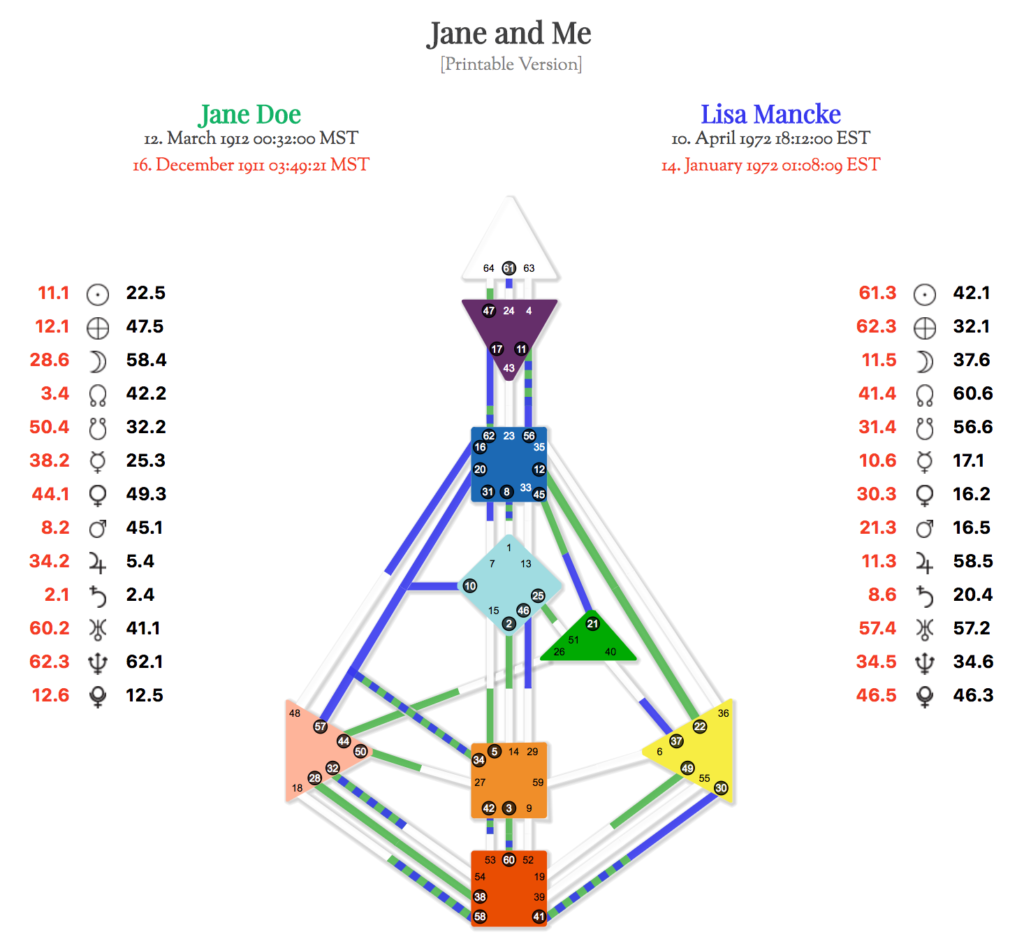
Transit Charts
Transit Charts and a Just Now chart round out the chart types available.
Accessibility, Speed, and Design
A major challenge was to generate and display data for all objects in the chart in a way that modern internet and mobile users would find accessible, fast, and beautiful.
Since Taraka gathers large amounts of data from an underlying C library (Swiss Ephemeris) and then displays it to the user in an interactive manner allowing for filtering, speed was a concern. We developed a caching system for chart data that eliminated the need for regeneration of ephemeris data from Swiss Ephemeris’ C library unless underlying data points change.
Taraka uses vector drawing technology to allow the user to interact with their charts. For some examples:
A user can tap, or click, on a Center, Gate, or Planet and filter the information provided. Here, a user taps on a chart’s Root Center (bottom red square). Activation information is filtered as requested.

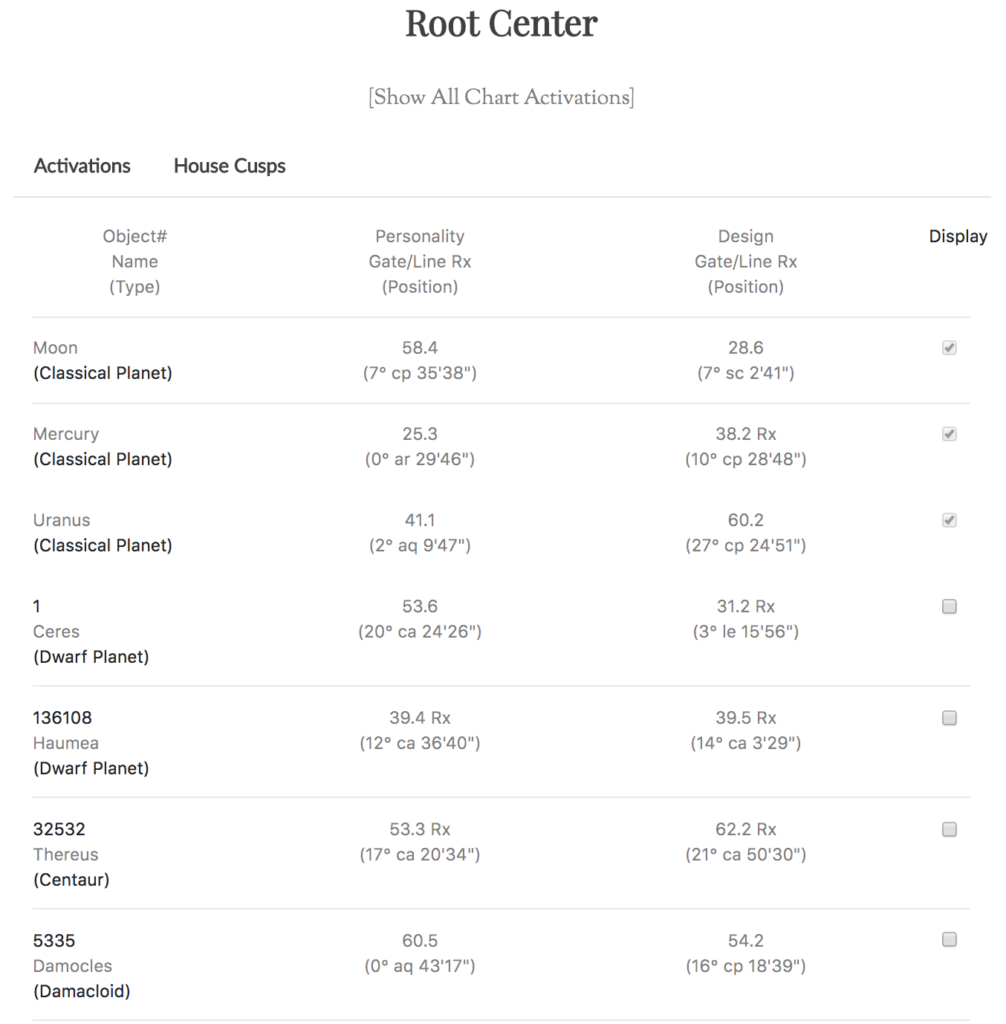
Here, a user chooses to visually identify the locations of minor planet data on their chart, again with a simple touch or click:
 Select the objects you wish to view.
Select the objects you wish to view.
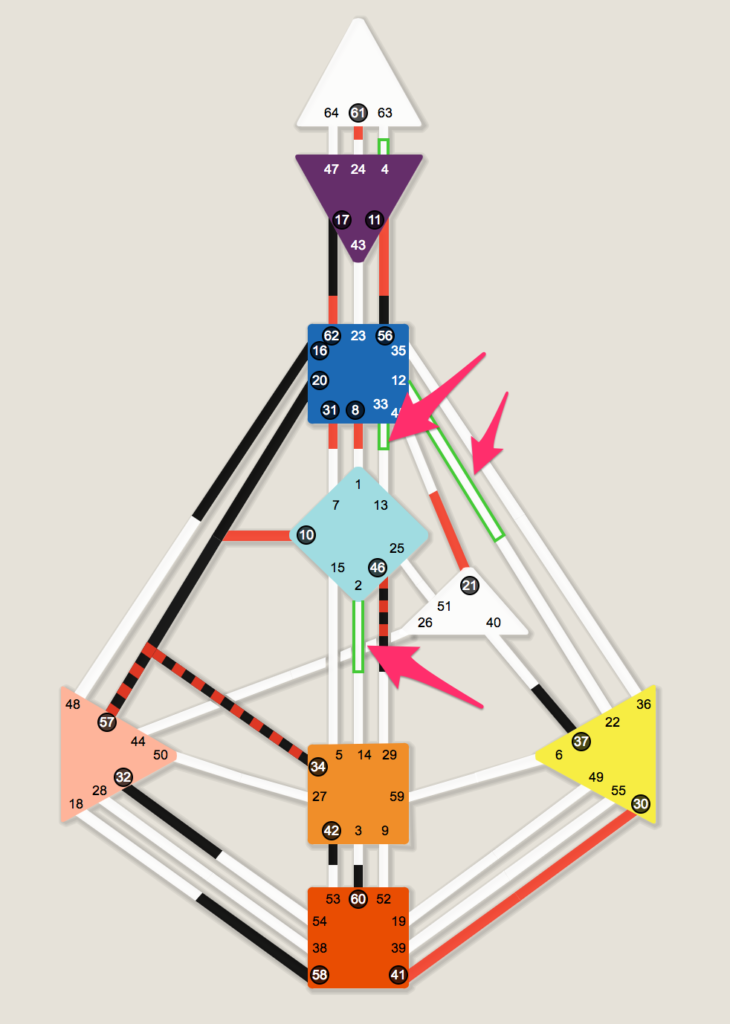 see gate activations.
see gate activations.
We implemented a Time Machine mechanism that allows users to move Progressed and Transit charts quickly through time, looking for trends and changes.
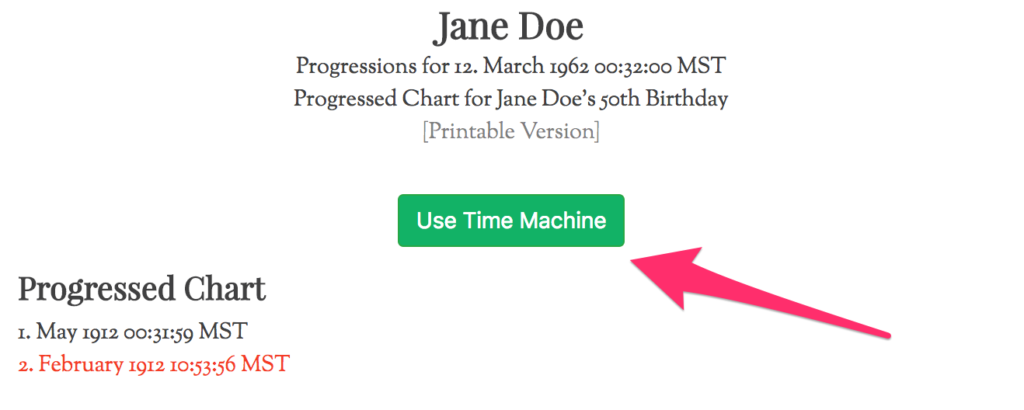
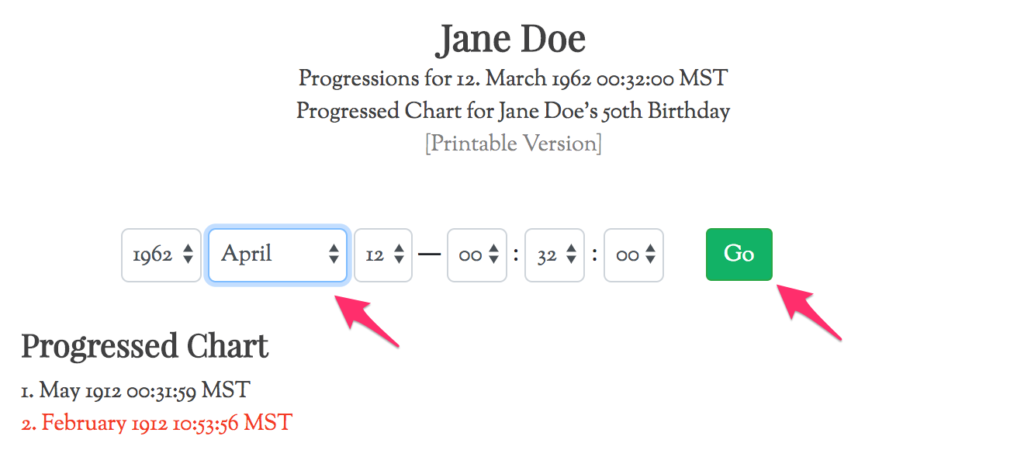
People and Transit Charts can be tagged for easier filtering and searching.

Delivery to Customers
Taraka’s Ruby on Rails application offers both a free subscription (one Natal Chart and the Just Now chart) or a monthly paid-subscription (many, many charts). Taraka uses Stripe to manage its subscription billing needs, in a PCI compliant manner.
With a paid subscription, users can save many people, transit, and composite charts, generating a reference library of family, friends, clients, and public figures.
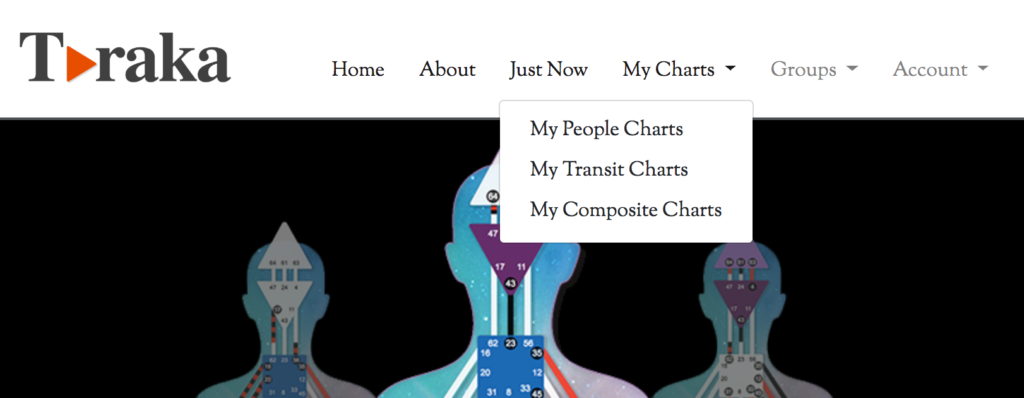
Users can manage their account, their subscription, and their profile as needed.
Taraka complies with all modern privacy laws, including GDPR.

Taraka is deployed on bare-metal servers at Rackspace.


